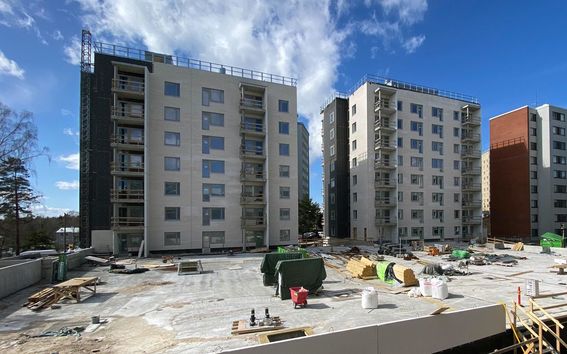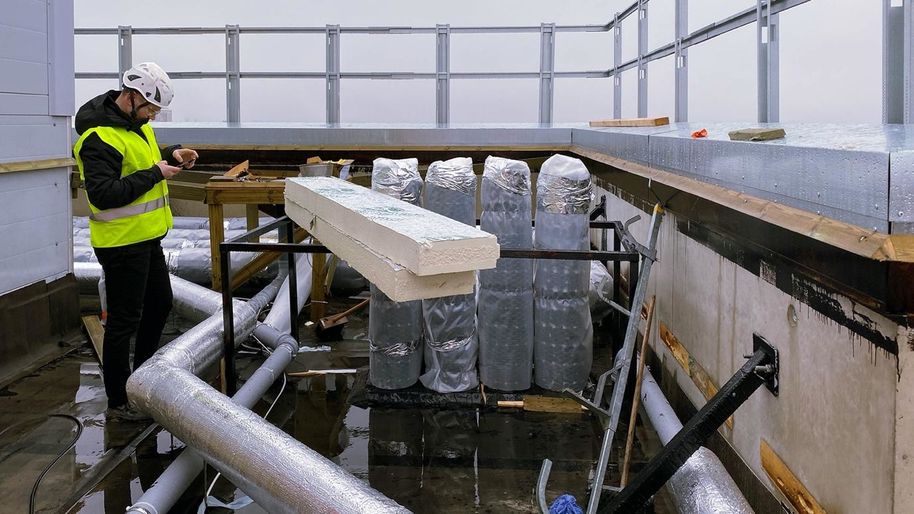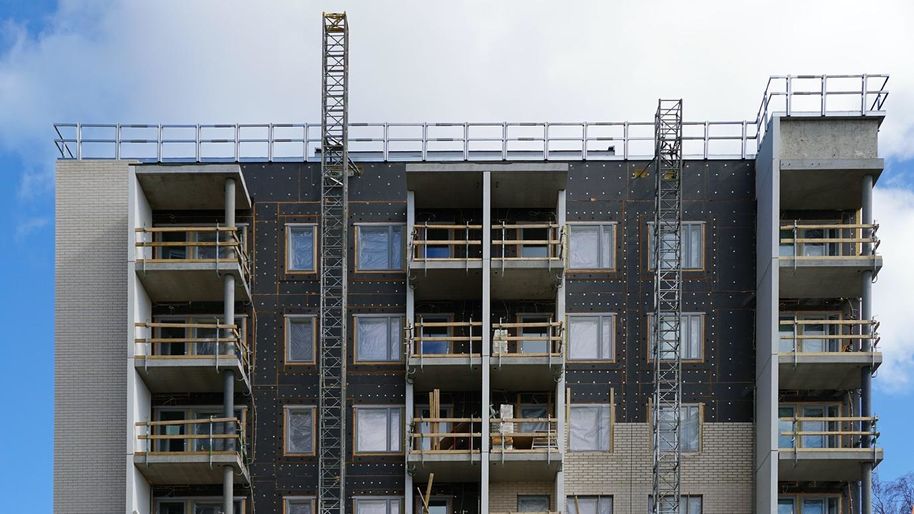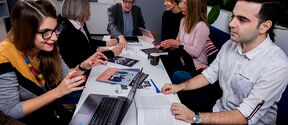DiCtion Uses Visual Data to Automate Construction Site Processes

DiCtion, Digitalizing Construction Workflows, is a multi-party project funded by Business Finland. The project seeks to boost productivity through the digitalisation of construction workflows. Aalto University leads the project and Fira, a Finnish construction firm, is one of the consortium members. Aalto and Fira collaborate to empower managers and construction workers with situation and locational awareness data.
New Value from Data
“In construction, we have so many systems in use. The question is, how to tie all the information together,” says Ana Reinbold, a doctoral candidate and Aalto’s project member in DiCtion.
The DiCtion research team wants to use data from various parts of a construction project and explore ways to create new value with the aggregated information. They use computer vision, AI technologies and a shared data model, an ontology for the construction process, to automate the processing and use of the data.
Tommi Vihervaara, Head of Data at Fira, sees the construction site as an untapped source of valuable process data. “Product data, logistics, and material streams have been digitalised quite swiftly,” he says. “However, construction processes on the site have delivered just a handful of data, what we call the digital footprint.”
With the digital footprint, it’s possible to pinpoint and solve productivity problems, create a digital twin of the construction process, and use AI for automation. Vihervaara believes that machine vision and Natural Language Processing will create new kind of data and reveal previously unknown causalities.
The Pilot Project
A condominium construction site, Ida Aalbergintie 1B in Helsinki, serves as a pilot project. It’s one of Fira’s housing projects comprising 105 apartments in two towers. In the project, Fira leverages takt production and latest digital tools for construction project management.
On the site, Fira’s personnel and foremen of subcontractors use Fira Sitedrive software for scheduling and Congrid’s cloud service for quality management among other mobile apps. Fira has its own data platform for combining, analysing and visualising the project data at project and company level. Aiforsite provides drone images and 360-degree videos from the site, monitors conditions with IoT sensors, and collects position data of people, equipment and materials.
Fira and Aalto collaborate in analysing the business process data by using an open data platform with a shared aim to develop production methods and takt production to a new level.

Computer Vision for Progress Monitoring
Traditionally, it’s time-consuming or almost impossible for project managers to get a comprehensive picture of the actual state of a large construction site. When the situation picture is unclear, decisions are not based on facts and therefore they are not optimal. Resulting suboptimisation causes wrong work sequences, materials arrive too late or too early, and workers cannot start or finish their tasks as planned. Especially in precisely scheduled takt production, that can be a huge impediment to productivity.
Two Aalto researchers, Antti Aikala and Mustafa Khalid Masood, are finding out how computer vision can be harnessed for automated progress monitoring. Their aim is to create a system that can report the state of drywall installations on the construction site without human interpretation of on-site videos.
Aikala and Masood use 360-degree hard hat video camera data that Aiforsite’s Digital Engineer collects during weekly site walk-throughs. They plan to apply deep learning-based computer vision for object and scene recognition. In addition, they intend to align the images or 3D point clouds generated from them with the BIM model to make as-built vs as-designed inferences.
Better Task and Space Planning
Alaa Al Barazi, an Aalto researcher, uses location data to analyse how spaces are used for various tasks on the construction site. He argues that current work planning does not take into account the needs of various workers on the site. As a result, even one-week lookahead plans are only 47% accurate and three-month plans never hit their target.
Al Barazi suggests a situation-aware and visual space planning system that managers and workers can use to optimise tasks and hence improve productivity. He has already illustrated his idea with a space-planner demo application. This featured a floor plan of an apartment with defined workspaces and HVAC and drywall workers moving around, tracked by IoT beacons. The simulation visually displayed who was on the premises, if they were in their intended workspace and their duration of stay.
From the Ida Aalbergintie project, Al Barazi is collaborating with Fira with the visual and position data to further study how spaces are used for working for intermediate tasks and for short-term storage.

Serving Construction Workers Better
“We have a fair amount of development in tools and technologies targeting management, but almost none targeting the construction,” says Reinbold. “As part of my research, I would like to use data for visual management that benefits the workers. For example, they could visually track equipment or check if they have everything they need to start working. It would also give workers a chance to monitor their progress autonomously.”
Christopher Görsch, a doctoral student, shares Reinbold’s concerns. To better understand the information needs of construction workers, he is conducting an extensive survey during DiCtion. Görsch’s project will scrutinise how information in plans and schedules supports on-site decision making and worker performance. He also aims to explore future opportunities to improve situational awareness on construction sites.
Bringing it All Together with the Ontology
To be able to collect data from various sources and combine it in a meaningful way and without manual interaction, you need a shared data model. DiCtion has created a data model, an ontology, especially for construction processes. This has already been utilized by Fira in integrating commonly used software solutions and apps to its open data platform as well as publishing its application programming interface (API) for construction and software industries.
Yuan Zheng, a doctoral student at Aalto, is one of the creators of the DiCtion ontology. He works with Fira to populate the ontology from the data and test its viability for future uses. When the data is in a contextual machine-readable form, new opportunities for its use during and after project completion emerge.
DiCtion is an excellent setting for both Aalto University and Fira to learn more about the possibilities of digitalised construction. The research results have already given Fira’s software developers inspiration and factual information to create better, user-centric solutions for digitalised construction. The ontology, specifically, is something that all developers can put into use right away.
Read more news

Research Council of Finland establishes a Center of Excellence in Quantum Materials
The Centre, called QMAT, creates new materials to power the quantum technology of coming decades.
Two Unite! Seed Fund projects involving Aalto secure top EU funding
Two prestigious EU grants have been awarded to projects that were initially supported with Unite! Seed Funding. Both projects involve Aalto.
Major funding powers development of next-generation machine technology aimed at productivity leap in export sectors
The BEST research project is developing new types of sealing, bearing, and damping technology.






